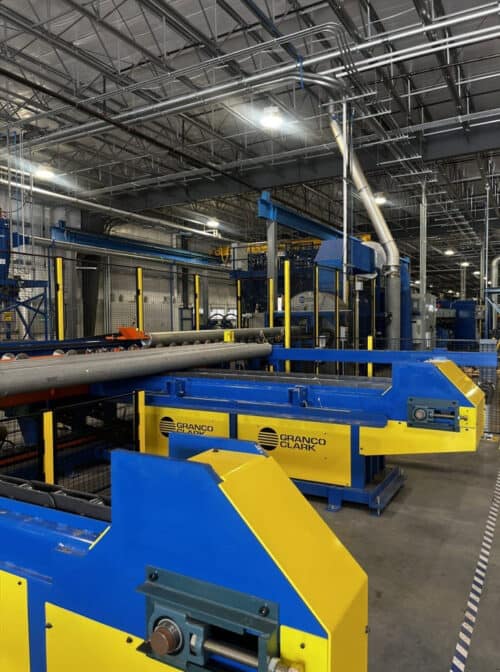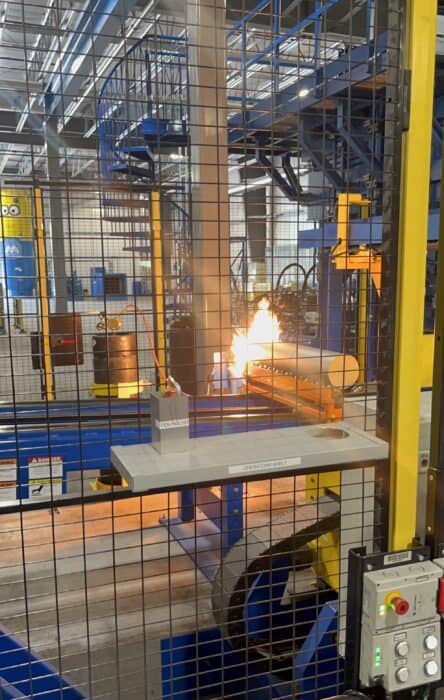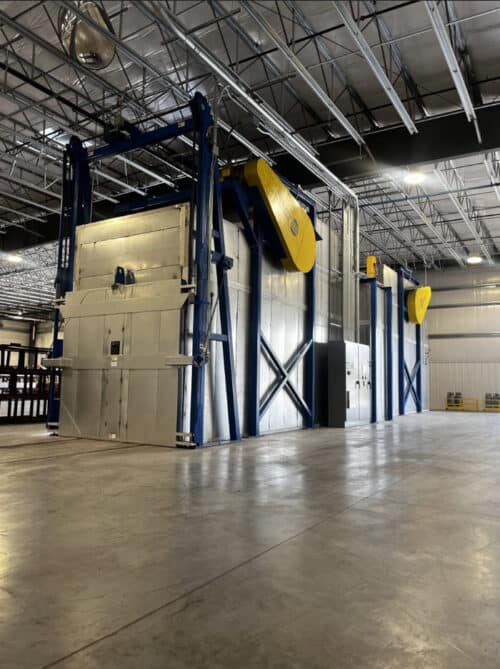At Tri-State Aluminum, we offer custom die creation services to accommodate highly specific or unique extrusion needs. In addition to our custom extrusion offerings, we also maintain a stock of over 2,000 standard dies in various extruded shapes, including but not limited to channels, tubes, and tees. Altogether, these capabilities enable us to provide customers with aluminum extrusions manufactured to meet their exact specifications and standards, whether that involves standard and simple extrusions or unique and complex extrusions.

Overview of the Aluminum Extrusion Process
Extruding aluminum is a metal forming process that uses compression and a pre-cut die to shape aluminum billets into long, uniform parts, such as rods, beams, tubes, or channels. Depending on the shape of the die, extruded aluminum components can be solid, hollow, or semi-hollow. The process is highly temperature intensive and requires specialized equipment and expert handling to ensure optimal strength and accuracy.
A typical aluminum extrusion process involves the following steps:
- Creating the die. Before the extrusion process can begin, a design must be created and manufactured to meet the desired product’s shape and size specifications. Aluminum extrusion dies are typically made from durable steel to ensure they can withstand repeated use.
- Preparing the die. Once an appropriate die is attained, it is preheated and attached to the extrusion press as part of the setup for the extrusion operation.
- Preparing the billet. Another key step in the preparation stage is preheating the raw aluminum material (also known as the billet) to between 750° to 930° F. This softens the metal without melting it. The preheated aluminum billet is then loaded onto the extrusion press.
- Extruding the material. Once the die and billet are properly prepared, a hydraulic ram forces the aluminum through the heated die, extruding it into the desired shape.
- Initial cooling and cutting of the extruded pieces. The aluminum extrusion then exits the die, is cut at the desired length, and guided across a cooing table. The table uses a water bath, spray, mists, or air to cool the extrusion. At the end of the table, a hot saw separates the extrusion from the rest of the material for further processing.
- Finishing the extrusion. Throughout the extrusion process, the material may experience twisting and turning, which can be corrected by stretching the extrusion back into the proper alignment. Once the extrusion is fully straight, it is cut into the desired lengths and, if needed, aged, quenched, heat treated, coated, painted, or otherwise finished.
Common Alloys Used in Aluminum Extrusions
Extrusion operations utilize a variety of aluminum materials depending on the end use and production specifications of the project. Some of the most common aluminum alloys used include:
- Aluminum 1100: Aluminum 1100, also known as commercially pure aluminum, is highly soft and ductile. These qualities allow it to be extruded into many complex shapes.
- Aluminum 3003: Aluminum 3003 is an aluminum-manganese alloy that is stronger but less malleable than 1100. It is typically used in extrusion operations for heat exchanger tubes.
- Aluminum 6063: Aluminum 6063, also known as architectural aluminum, is an aluminum alloy containing magnesium and silicon. It is suitable for extruding parts with intricate designs (e.g., thin walls or fine details) or intended for decorative applications.
- Aluminum 6061: Aluminum 6061 is a high-strength material, boasting a minimum ultimate yield and tensile strength of 35,000 psi and 38,000 psi, respectively. These qualities, combined with its excellent extrudability and weldability, make it ideal for use in structural components such as vehicle frames and pipelines.
- Aluminum 7075: Aluminum 7075 is one of the strongest aluminum alloys, offering better yield, tensile, and weld strength than 6061 but at a higher cost. For this reason, it is typically used in applications where strength is paramount, such as aircraft, military, and extreme sports equipment components.
Typical Extruded Aluminum Shapes
Aluminum extrusions can be designed and manufactured in a wide range of shapes. At Tri-State Aluminum, we have an inventory of standard dies for the following extrusions:
- Angles with sharp or rounded corners
- Bars in rectangular or square-hexagonal shapes
- Channels with sharp or rounded corners
- I-beams with rounded angle and sharp corners, rounded angle and corners, and tapered walls
- Round Rods
- Tees with sharp or rounded corners
- Tubes with round, IPS round, rectangular, and serrated shapes
- Zees with sharp corners
Advantages of Aluminum Extrusions
Compared to other types of manufactured components, aluminum extrusions offer a number of advantages, such as:
- Superior strength-to-weight ratio
- Broad material selection
- Wide application suitability
- Excellent corrosion resistance
- High thermal and electrical conductivity
- Low cost
Contact Tri-State Aluminum for Your Aluminum Extrusion Needs
At Tri-State Aluminum, we have provided high-quality aluminum extrusions for over 30 years. This experience, combined with our comprehensive custom aluminum extrusion die creation capabilities and over 2,000 standard aluminum extrusion dies, enables us to manufacture and assemble extruded aluminum components for virtually any industry or application.
Some of the industries and applications we regularly serve include:
- Automotive
- Building/Construction
- Consumer Goods
- Electronics
- Healthcare/Medical
- Instrumentation
- Lighting
- Marine
- Signage
For more information about our aluminum extrusion services capabilities, contact our experts or request a quote today.



